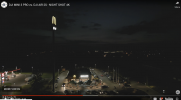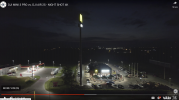The
Air 2s is naturally going to be more stable than the
Mini 3 Pro. It weighs more and is more dense. That's not to say the
Mini 3 Pro would have an issue per se.
I don't see how the
M3P will have a lower future operating cost. That seems negligible at best. In fact, the
Air 2s has an established line of compatible accessories, whereas the 3 does not yet. And as for it falling out of the sky, the difference in weight isn't going to matter much.
There are some other factors to consider with the
Air 2s that may justify the cost:
1. 5K video capability
2. Larger, 1" sensor which will likely have a low light advantage
3. Compatibility with DJI RC Pro (I just got one...it's a massive upgrade) and previous
Smart Controller.
That's not to say it's worth it for everyone. As I posted earlier, if you want the best photo quality and demand better portability, and are more budget-conscious, the
M3P might make sense. But if you're looking for the best all-around recreational/photography drone? I think the
Air 2s makes a very solid case.













